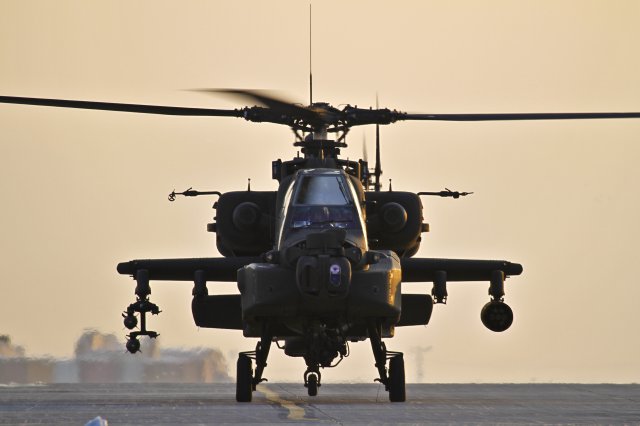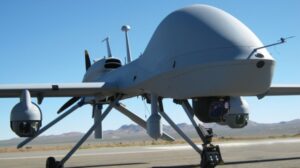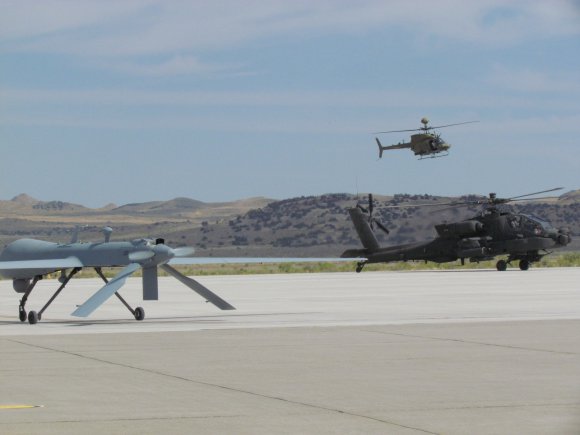Grey Eagle-Apache Run Shows Tech’s Not Enough; Ya Gotta Have Doctrine
Posted on
VIRGINIA BEACH, VA.: Manned-Unmanned Teaming, when manned aircraft crews control drones from their cockpit, is a child of the drone revolution still in its infancy. So maybe it’s no surprise that Army Apache helicopter units with new AH-64Es equipped to control MQ-1C Grey Eagle armed drones have gotten off to a crawl rather than a run using the new capability in combat.
“The pilots from the units don’t necessarily have use of the Grey Eagle as much as they want to to work on this capability,” Lt. Col. Tal Sheppard, fielding and production program manager for the Apache, told an American Helicopter Society International briefing Wednesday.
The 1st-229th Attack Reconnaissance Battalion experimented with MUM-T (as it’s being called) during a seven-month deployment to Afghanistan with AH-64Es last year — the Echo model’s first deployment — and the 1st-101st Aviation Reconnaissance Battalion is there now with a similar capability. But while equipped with a Tactical Common Data Link (TCDL) that lets them “talk” to Grey Eagles, the Apache crews have to get permission to use the drones from higher headquarters, where the MQ-1Cs are much in demand for other missions. The commander of the 1st-229th told a Washington briefing in January that his unit worked with drones in 60 percent of its missions in Afghanistan, but mostly by coordinating with operators of small drones by radio rather than receiving their video in the cockpit.
“It’s a higher level, division level asset that while our first unit equipped was deployed, they were able to get some access with the Grey Eagle and work on some of the TTPs (tactics, techniques and procedures)…but not enough to really harness that power, harness getting a Grey Eagle sensor at your control,” Sheppard said.
The Grey Eagle, a derivative of the Air Force’s MQ-1 Predator also armed with Hellfire missiles, carries a sensor ball that can stream live daylight or infrared video to recipients with the right data link and screen, which the TCDL provides. The TCDL operates only on the Ku-band frequency, however, and Army drones other than the Grey Eagle use other frequencies. Sheppard said the service is planning a competition to acquire a data link able to communicate over various frequency bands so that MUM-T will be possible with all its drones. The Army hopes to have that new black box by 2017 or 2018, he said.
Rich Kretzschmar, the Army’s Unmanned Aerial Systems (UAS) deputy project manager, told the same briefing that in the future, pilots of all Army helicopters will want the ability to monitor and control drones.
“There’s no reason why a utility Black Hawk pilot or Chinook pilot might not want to know just as much about what’s going on around them,” Kretzschmar said. “When you’ve got a hot LZ (landing zone) and you’re bringing people in or picking people up, obviously you want to know where the guys are hiding, where fire’s coming from. I expect it to grow exponentially once we find the resources.”
For now, the idea is to let Apache crews be the first to use MUM-T as a way to compensate for the service’s hotly debated decision to retire its fleet of OH-58D Kiowa Warrior armed scout helicopters.
“We’re doing it with the Apaches because it’s the armed scout mission,” Kretzschmar said. “The technology works very well. We’re getting our arms around the doctrine.”
Subscribe to our newsletter
Promotions, new products and sales. Directly to your inbox.



